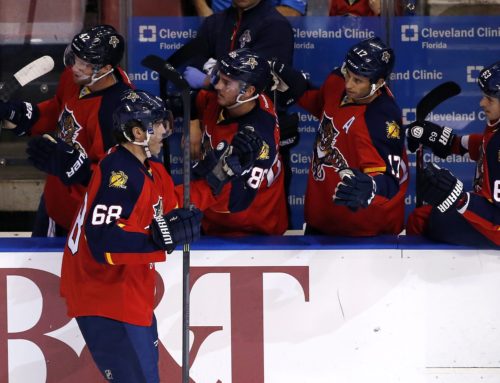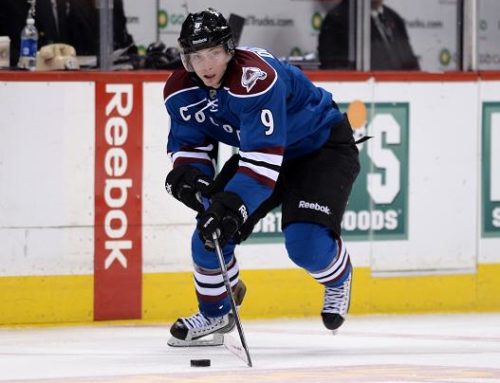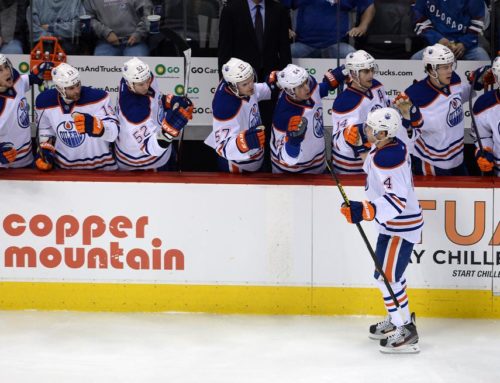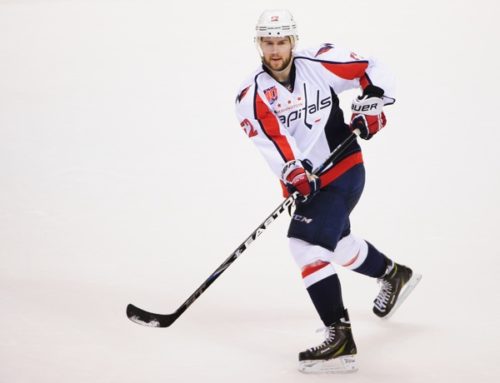
Matt Cane and Rob Vollman take close, analytical look at Columbus forward Brandon Saad
Matt Cane and Rob Vollman have devised a system to project a player's future performance by finding players with common statistics historically (Vollman, on the left) and in the modern day (Cane, on the right). This article is part of a series to introduce readers to their system, and to demonstrate how it can give you an edge in fantasy hockey.
Forgive me for the title, but there is literally someone in my fantasy hockey pool who once selected Brandon Saad way too early just because I had just selected James Neal, and he wanted to (repeatedly) say that I chose "Neal before Saad". I am incapable of discussing Columbus' newest superstar without remembering that lame joke. And now – neither are you.
Getting to serious business, Saad is a pretty consistent 50-point player, but that was when he was awfully young, and playing in Chicago, primarily with Toews and Hossa. Now, all bets are off – he's in Columbus, and his new six-year, $36 million contract makes him the biggest cap hit on the team (among skaters), placing a lot of weight on his 23-year-old shoulders. Suffice it to say, front office jobs could be on the line if he slumps to the 44-point weighted average of his modern comparables (on the right), instead of the tremendous upside potential suggested by notable historical comparable Guy Lafleur (on the left).

Rob's Take: Selected first overall in the 1971 Amateur Draft, Montreal's Guy Lafleur began his career rather inauspiciously, scoring 78 goals and 175 points in 215 games through his first three seasons. Even after adjusting for the different scoring level of the era, that's still higher than Saad's first three seasons, but not outrageously so.
Then, the league expanded, Lafleur moved up the team's depth chart, and he exploded for the first of six consecutive 50-goal seasons, and just one point shy of six consecutive 120-point seasons – a stretch that also included four straight Stanley Cups, and back-to-back Hart trophies at age 25 and 26. Quite simply, he became the world's greatest hockey player until number 99 came along (no, not Wilf Paiement).
This is admittedly an outrageously optimistic upside, especially given Lafleur's vastly superior results in the Canadian junior leagues, but look at the other historical comparables. They may not have had the same great hair, but Petr Nedved, Dave Gagner, and Steve Sullivan essentially became point-a-game players until age 30. And, if Saad turns into more of a well-rounded two-way player with slightly lower scoring levels, like Jordan Staal and Keith Primeau, who would complain? Even the modern comparables have at least one player in each category (Jakub Voracek, and Zach Parise, respectively).
We all know that NHL teams have to take calculated risks in order to become champions, and that's exactly what Jackets GM Jarmo Kekalainen has done with Saad. Likewise, fantasy teams need to take calculated gambles in order to win ultra-competitive leagues. I agree that there's clearly a good chance of Saad being a complete bust, but there's also a huge upside – you get to demand that your vanquished opponents kneel before Saad!
Matt’s Take: Is Brandon Saad poised to establish himself as a top tier scorer? Or will he be another player who lounges in the 50 point range for the peak years of his career? After Columbus paid a hefty price to pick him up from the Blackhawks prior to the free agent period opening, the Blue Jackets are hoping that Saad’s production will skyrocket as he enters his prime and is given proper minutes for a top line winger. And it’s easy to see what the Jackets were buying when you look at his comparable lists, because the upside potential for Saad is high. Really, really high. But even if he doesn’t end up as the next Guy Lafleur (his most prominent historical comparable), Saad’s modern comparables include the pre-breakout years of Zach Parise and Jakub Voracek, players who have thrived in the modern game and continued to put up points even as league wide scoring has gone down. Even if he ends up in the range of many of his modern comparables beyond Lafleur, such as Jeff Friesen and Petr Nedved, you’d have to believe that both Columbus and his fantasy owners would be happy with that level of production.
On the other hand, Saad’s comaparable lists are also littered with players who looked as if they were ready to establish themselves as consistent top 6 options before flaming out early in their careers. Andrei Kostitsyn and Devin Setoguchi both appeared to be entering the peak years of their careers with upside potential before falling off the face of the earth rather quickly. Kostitsyn is now off in the KHL, while Setoguchi is stuck fighting for a spot on a PTO this season. While we’re often told that certain players have a lock on an NHL roster spot as they advance into their prime years, it’s important to remember that past performance and increased opportunity is no guarantee of future success.
All of which is to say that while Saad has considerable upside, fantasy owners need to be cautious not to count their chickens before they hatch with the young winger. Saad is likely to be a hot commodity with his move to Columbus, and while the increased opportunity may turn him into a superstar in the coming year, Saad hasn’t earned “sure thing” status quite yet. Other owners may be eager to get what they see as an undervalued asset, but his comparables here show that a cautious approach may be warranted – the potential is there but don’t jump the gun too early on a player with a lot to prove this year.
For complete projections on over 700 active NHL players, Vollman and Cane Historical Projections 2015 is available exclusively through the Dobber store for just $4.99 – or it's free if you bought the Fantasy Guide using the coupon code on page 151!





 BUF
BUF NYR
NYR CHI
CHI WSH
WSH CBJ
CBJ S.J
S.J VAN
VAN PIT
PIT ANA
ANA
